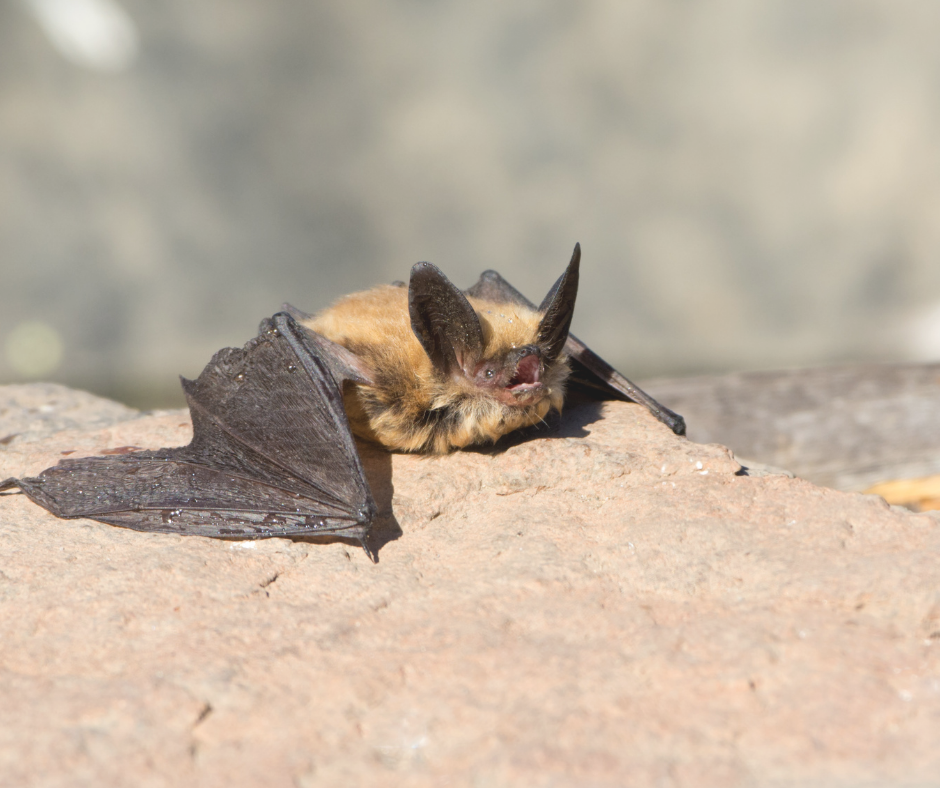Making the Sawtooth Wilderness home
Two vesper bat species are known to inhabit the Sawtooth NRA. The Townsend’s big-eared bat Corynorhinus townsendii and the spotted bat Euderma maculatum.
Vesper bats (Vespertilionidae) is a family of microbats, of the order Chiroptera, flying, insect-eating mammals variously described as the common, vesper, or simple-nosed bats.
They are the most diverse and widely distributed of bat families, occupying a range of habitats and ecological circumstances, and frequently observed or the subject of research.
These unique creatures are essential in their role in pest control, pollinating plants, and dispersing seeds. In a recent USDA study, it is estimated bats eat enough pests to save more than $1 billion in crop damage and pesticide costs in the United States every year.
Townsend’s Big-eared Bat
Unique characteristics
A medium-sized bat with very long ears. Their fur is pale gray or brown above and buff-colored on the underside. This bat’s ears are enormous, reaching a length of 1.5 inches. When the ears are laid back they extend to the middle of its body. The face is marked by two large glandular lumps on either side of its nose.
Size
Their wingspan is 12-13 inches and they weigh between 0.3-0.5 ounces.
Migration/hibernation
These bats do not undertake a major migration and are generally rather sedentary. The hibernation roosts are usually abandoned mines or caves that have low and stable temperatures. While hibernating they hang solo or in small groups in the open, with their fur erect to provide maximum insulation and with their ears coiled back.
Habitat
Townsend’s big-eared bats will use a variety of habitats, almost always near caves or other roosting areas. They can be found in pine forests and arid desert scrub habitats. When roosting they do not tuck themselves into cracks and crevices like many bat species do but prefer large open areas.
Range
These bats can be found throughout the western United States from British Columbia to central Mexico.
Diet
They specialize in eating moths and other insects such as beetles, flies, and wasps. Townsend’s big-eared bat is usually a late flier and will forage along the edge of vegetation.
Predators
These include snakes, owls, cats, raccoons, and hawks.
Reproduction
Summer maternity colonies range in size from a few dozen to hundreds of individuals. These colonies form between March and June with pups born between May and July. Maternity colonies choose sites that have warm, stable temperatures for pup rearing. Males remain solitary during the maternity season. Only one young is born per female. Pups will begin to fly at about three weeks old.
Life Span
These bats live from four to ten years; the maximum life span recorded is 16 years.
Fun Facts
- When it’s roosting or hibernating, Townsend’s big-eared bat curls up its long ears so they look like ram horns.
- When flying they can rapidly extend or contract their ears. When flying with their ears extended the ears point forward and are nearly parallel to their body.
USDA Technical Conservation Assessment
The Spotted Bat
While not as much detail is known about the spotted bat (once thought to be rare), there are a few distinguishing features that set it apart from the Townsend big-ear variety.
Unique characteristics
Long, silky fur is snow white beneath and jet black above, accentuated by large white spots on its shoulders and rump with pink wings and translucent pink ears, nearly as long as its body. It’s the largest of any bat found in the United States.
Size
Their body length is 4.0 to 4.50 inches. Their wingspan is about 14 inches and they weigh 0.6-0.7 ounces.
Migration/hibernation
Some spotted bats will migrate from colder to warmer regions in the winter. They will also go into a torpor (mental inactivity/lethargy) in cold weather. This means its body temperature and heart rate will slow to its surroundings.
Habitat
The spotted bat prefers arid regions, desert scrub, and open forests in rugged landscapes. They roost on vertical cliffs and in open canyons. Their habitat always seems to be associated with a water source such as a spring, creek, river, or lake.
Range
This bat can be found from British Columbia, Canada southward through the western United States and into Mexico.
Diet
The spotted bat eats a variety of insects, with moths being its food of choice.
Predators
Owls, raccoons, and skunks are a few of their natural predators.
Reproduction
The spotted bat’s mating season is in autumn, with the female giving birth in a maternity colony in June to usually only one pup. The pup does not have the distinctive color pattern of the adults at birth.
Life Span
Not much is known about the life span of the spotted bat, but it is assumed to live in the wild for more than 20 years.
Fun Facts
- The ears of the spotted bat are rolled up around its head when resting. When active, they inflate with blood and unroll.
- Unlike most other bats, the spotted bat is solitary and territorial.
- This is one of the few bats whose echolocation sound is low enough to be heard by humans.




